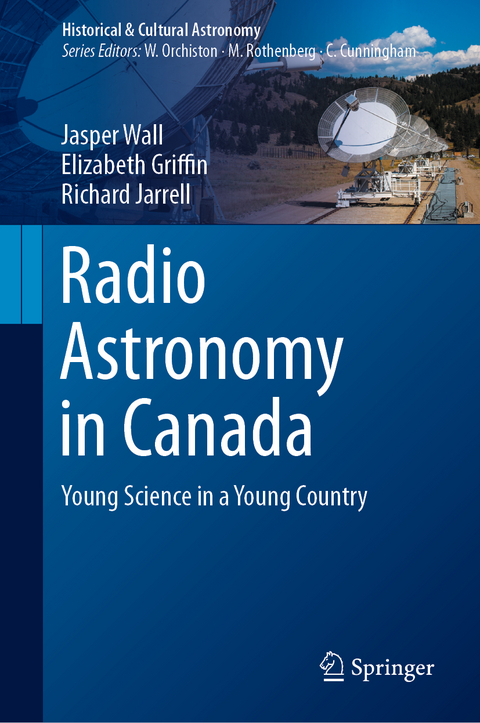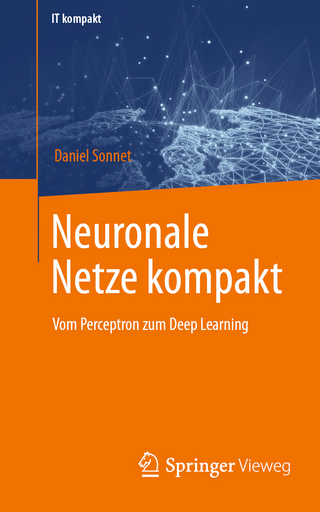
Radio Astronomy in Canada
Springer International Publishing (Verlag)
978-3-031-12933-9 (ISBN)
- Noch nicht erschienen - erscheint am 12.03.2025
- Versandkostenfrei innerhalb Deutschlands
- Auch auf Rechnung
- Verfügbarkeit in der Filiale vor Ort prüfen
- Artikel merken
Here is the tale of Canada's intriguing development of the science of Radio Astronomy. In 1946 the lone figure of Arthur Covington started monitoring the radio emission of the Sun, a programme that continues to this day. By the 1960s Canada had progressed to constructing two radio observatories at either ends of the country (the DRAO and the ARO), and universities were coming onboard. The story continues through the dire times for these and follows their fortunes and fates right up to the present, with Canada now playing key roles in billion-dollar international telescope projects. It concludes with the construction and operation of Canada's own transformational telescope, CHIME. Anecdotes and images throughout the book liven the story.
The authors-two practising astronomers-have painstakingly put together this fascinating story, drawing on first-hand experiences, valuable contributions from many colleagues, and the research of science historian, Richard Jarrell (1942-2013).This book fills a gap in the substantial literature on the history of radio astronomy. Carefully-researched by three experts and based on input by further experts in the field, it documents the extensive scientific and (especially) technical innovations of Canadian scientists and engineers. This includes the important Canadian absolute flux-density calibrations, the critical Canadian contribution to low-frequency radio astronomy and VLBI, and the long-running solar monitoring programme. Frank discussions about the excellent 46-m ARO telescope and its fate lead into considerations of Canada's contributions to recent international projects - the JCMT, ALMA and the upcoming SKA. The book concludes with a description of CHIME, Canada's own new-generation radio installation.
Ken Kellermann, Senior Scientist Emeritus, National Radio Astronomy Observatory, Charlottesville, USAJasper Wall began his astronomy career in Canada (Toronto) measuring absolute flux density of the Galactic emission at radio frequencies. He furthered it in Australia at doctoral and post-doctoral levels using the Parkes 64-m dish in sky surveys for extragalactic sources the (then) very high frequency of 2.7 GHz. In these surveys he discovered a vast population of flat or inverted-spectrum quasars. hitherto unrecognized. Much of his subsequent research career (mostly spent in the UK) consisted of further deep-sky surveys, the cosmic distribution of the quasars and radio galaxies dis[1]covered, and statistical analyses to determine the astrophysical relationships between different classes of these objects. In these studies he has spent about half of his observing time at radio wavelengths and the rest at predominantly optical ones, using many of the major radio and optical telescopes in the world. Statistical analyses resulted in a career-long interest in astro-statistics. His book Practical Statistics for Astronomers (CUP, 2012, coauthored with Charles Jenkins) has been through two editions and is still in wide circulation. In mid-career, Wall was appointed to a senior position with the Royal Greenwich Observatory, including 4 years as Director of the Isaac Newton Telescope Group on the Canary Island of La Palma, and as Director of the RGO 1995 to 1998. A Visiting Professorship at Oxford followed. In 2002 he returned to Canada as Adjunct Professor at the University of British Columbia, where he continues studies in radio galaxies and astro-statistics while taking an ever increasing interest in the role played by Canada in the development of radio astronomy, from the earliest days of the science to its forefront role in the newly developing international suite of installations. The Canadian Astronomical Society’s Heritage Committee benefits strongly from the expertise and experience that Professor Wall brings as a member. Elizabeth Griffin has studied stellar astrophysics throughout her career, first pursuing abundance analyses of bright stars with very high resolution spectra, and coauthored the Procyon Atlas (in both analogue and digital formats) in 1979. Since 1980 her research has centered on analyzing a special sub-group of binary stars that exhibit composite spectra, observing with major North American and European telescopes 2 to record their spectra and also developing techniques and software to determine the masses of the stars involved. Able to apply her methodology to the rare subgroup of eclipsing systems, she has assembled a rich archive of digital spectra acquired with the powerful coud´e spectrograph of the Dominion Astrophysical Observatory in Canada (near to where she settled in 2002), uncovering oddities that were not previously known; part of that research featured in a book, Giants of Eclipse (Springer; 2015) which she co-authored, basing it upon an AAS conference that she had organized. With interests that have over time burgeoned from photographic data to digital data and to problems shared with data analysts in other sciences, she has developed a strong curiosity for parallel activities in her science, chiefly in the preservation and reuse of historical (principally analogue) data for modern research purposes. She was a core organizer and Proceedings editor of two IAU symposia that focussed on the astronomy’s Time Domain and included the whole gamut of variability cadences from seconds to centuries. She enjoys editing papers and Proceedings both on astronomy and on more general topics. Membership of related professional bodies includes the IAU, the AAS (representing heritage data through Working Groups in both organizations), and chairing the CASCA Heritage Committee. Richard Jarrell (1946–2013) discovered and fostered a love of nature, and of astronomy, from an early age. Born in the US, he obtained a major in History at Indiana University, with minors in astronomy and in History and Philosophy of Science, before moving to Canada and earning a PhD at the University of Toronto’s Institute for History and Philosophy of Science and Technology. He became a lecturer in the Department of Natural Sciences at nearby York University, where he was able to combine his deep interests in both astronomy and the history of science by developing courses that reflected his passion for astronomy, the breadth of his thinking, and his ability to view the wider picture. He remained at York, where he rose through the ranks to a full Professorship. His first major work—a book—published in 1988 (The Cold Light of Dawn) recounted comprehensively the history of astronomy in Canada as conducted at visual wavelengths. Richard’s significant strength was as an ‘institution builder’—the source of the energy that drove the vital first steps of a new entity until it was self-supporting. A founding member of the Canadian Science and Technology Historical Association, he earned renown as a champion of Canada’s scientific heritage, though his influence extended further inasmuch as he saw the whole of creation as a unique ecosystem.
What is Radio Astronomy?.- Catching on and Catching up.- Part I: Early Days.- Meteors, Radar and the Solar System.- Part II: University Departments and Institutes.- Eastern University Astronomy.- Western University Astronomy.- ARO: The Algonquin Radio Observatory.- DRAO: the Dominion Astrophysical Observatory.- CGPS.- Pan-Canadian Very Long Baseline Interferometry.- Outside the Radio-quiet Zone: Reflections on Radio Astronomy in Canadian Society.- Part III: Canadian Radio Astronomy into the 21st Century.- Changes.- JCMT: The James Clerk Maxwell Telescope.- ALMA: The Atacama Large Millimeter Array.- SKA: The Square Kilometre Array.- CHIME: The Canadian Hydrogen Intensity Mapping Experiment.- Epilogue: Richard Jarrell - Interest and Motivation in Astronomy.
| Erscheinungsdatum | 04.04.2024 |
|---|---|
| Reihe/Serie | Historical & Cultural Astronomy |
| Zusatzinfo | XXVII, 344 p. 139 illus., 101 illus. in color. |
| Verlagsort | Cham |
| Sprache | englisch |
| Maße | 155 x 235 mm |
| Themenwelt | Geschichte ► Teilgebiete der Geschichte ► Technikgeschichte |
| Naturwissenschaften ► Physik / Astronomie ► Astronomie / Astrophysik | |
| Schlagworte | Aperture synthesis • canadian university history • Cold Light of Dawn • Dominion Radio Astronomy Observatory • DRAO • government institutions radio astronomy • history of Canadian science • history of radio astronomy • Richard Jarrell • science in Canada • Solar Radio Astronomy Programme |
| ISBN-10 | 3-031-12933-4 / 3031129334 |
| ISBN-13 | 978-3-031-12933-9 / 9783031129339 |
| Zustand | Neuware |
| Haben Sie eine Frage zum Produkt? |
aus dem Bereich


